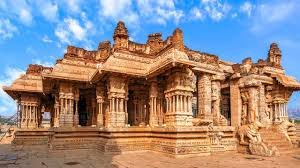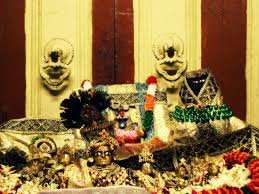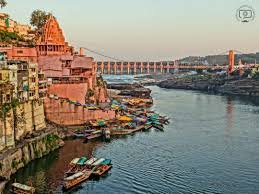Introduction
Tucked away in the remote Zanskar Valley of Ladakh, Phugtal Monastery & Cave Temple is one of the most spectacular and isolated Buddhist monasteries in the world. Built into a massive limestone cliff, this ancient monastery looks like a beehive hanging from the rugged mountains.
For centuries, this sacred retreat has served as a center for meditation, learning, and Buddhist philosophy. The journey to this enchanting monastery is an adventure in itself, as it requires trekking through rugged mountain trails, narrow gorges, and breathtaking landscapes. Despite its challenging accessibility, Phugtal Monastery continues to attract monks, pilgrims, and travelers seeking peace, wisdom, and a deeper connection with Buddhism.
The History and Significance of Phugtal Monastery
Phugtal Monastery, also known as Phuktal Gompa, dates back to the 12th century and belongs to the Gelugpa sect of Tibetan Buddhism. The name “Phugtal” is derived from the Tibetan words “Phuk” (cave) and “Tal” (liberation), meaning “the cave of liberation.”
According to legend, great Buddhist scholars and monks such as Padmasambhava, Phakpa Rinchen Zangpo, and Lama Marpa visited this cave for meditation before it became a monastery. In the 14th century, the renowned Tibetan master Jangsem Sherap Zangpo established the monastery in this natural cave.
Over the centuries, Phugtal Monastery has remained a spiritual haven for Buddhist monks, who dedicate their lives to meditation, learning, and spreading the teachings of Buddha. The monastery houses a large prayer hall, ancient scriptures, murals, stupas, and an impressive library containing sacred Buddhist texts.
The Unique Cave Structure of Phugtal Monastery
Unlike other monasteries in Ladakh that are built on open hillsides or valleys, Phugtal Monastery is nestled within a natural cave, making it one of the most unique monasteries in the world. The structure blends seamlessly with the cliffside, giving it a mystical, almost surreal appearance.
As you approach the monastery, you will see whitewashed mud-brick buildings cascading down the cliff. The main prayer hall, monk’s quarters, school, and meditation chambers are all carved into the rock, creating a harmonious fusion of nature and spirituality.
Inside the monastery, intricate murals, ancient stupas, and beautifully painted walls depict the life and teachings of Lord Buddha. The prayer hall, adorned with colorful thangka paintings and sacred relics, radiates an aura of peace and enlightenment.
Journey to Phugtal Monastery – A Trek of a Lifetime
Reaching Phugtal Monastery is not easy, but the arduous journey adds to the monastery’s mystique and allure. Since there are no motorable roads leading to the monastery, visitors must embark on a trek through the remote landscapes of Zanskar Valley.
How to Reach Phugtal Monastery
- Getting to Padum:
- The journey begins in Padum, the main town of Zanskar Valley.
- To reach Padum, travelers must first arrive in Leh, Ladakh and then take a long, challenging road trip through Kargil and Suru Valley.
- Trekking to Phugtal:
- From Padum, a 2-day trek is required to reach Phugtal Monastery.
- The trek follows the scenic Tsarap River, winding through majestic gorges, narrow trails, and remote villages.
- Along the way, trekkers pass through Anmu, Purne, and Cha villages, experiencing the simple yet rich culture of Zanskari people.
As you trek through the breathtaking terrain, you will witness towering cliffs, snow-capped peaks, and turquoise rivers, making the journey as rewarding as the destination itself.
Daily Life at Phugtal Monastery
Phugtal Monastery is home to around 70 monks, who follow a strict discipline of meditation, study, and prayer. Despite the harsh weather and limited resources, the monks lead a simple yet deeply spiritual life, dedicating themselves to Buddhist teachings and monastic traditions.
Monastic Activities and Rituals
- Morning and Evening Prayers:
- Every day begins with prayers and chanting in the monastery’s main hall.
- The rhythmic sound of Buddhist hymns, drums, and bells fills the air, creating a serene and meditative ambiance.
- Teaching and Meditation:
- Young monks receive spiritual education on Buddhist scriptures, philosophy, and meditation techniques.
- Elder monks guide disciples through mindfulness practices and deep contemplation.
- Religious Ceremonies and Festivals:
- Chakhar Festival, celebrated once every three years, is the monastery’s most vibrant event.
- During festivals, monks perform masked dances, rituals, and elaborate prayers, drawing pilgrims from different parts of Ladakh.
Phugtal Monastery – A Spiritual Retreat for Seekers
Phugtal Monastery is not just a religious site but also a spiritual retreat for those seeking inner peace, self-discovery, and enlightenment. Unlike mainstream tourist destinations, this monastery offers solitude, silence, and an opportunity to connect with nature and oneself.
Why Visit Phugtal Monastery?
- Experience Solitude: Away from the noise of modern life, Phugtal Monastery provides a perfect place for meditation and self-reflection.
- Connect with Buddhist Culture: Visitors get a chance to interact with monks, learn about Buddhist traditions, and witness ancient rituals.
- Enjoy the Scenic Beauty: The monastery’s remote location, towering cliffs, and pristine rivers make it a paradise for nature lovers and adventure seekers.
Best Time to Visit Phugtal Monastery
Due to the harsh weather conditions in Zanskar Valley, the best time to visit Phugtal Monastery is between June and September. During this period, the roads remain accessible, and the trek is relatively easier and more enjoyable.
In winter (November to April), heavy snowfall isolates the monastery, making it almost inaccessible. However, for experienced trekkers, the frozen Zanskar River trek (Chadar Trek) offers a once-in-a-lifetime opportunity to witness the monastery covered in snow.
Conclusion
Phugtal Monastery & Cave Temple is a hidden jewel of Ladakh that remains untouched by commercial tourism. Its isolation, mysticism, and natural beauty make it one of the most sacred and awe-inspiring monasteries in the world.
Whether you are a spiritual seeker, an adventure enthusiast, or a history lover, Phugtal Monastery offers an unforgettable journey into the heart of Buddhism and Ladakh’s untamed wilderness.
So, if you’re planning a trip to Ladakh, don’t miss the chance to explore this extraordinary cave monastery, where the echoes of ancient Buddhist chants continue to resonate through the cliffs of Zanskar Valley.





